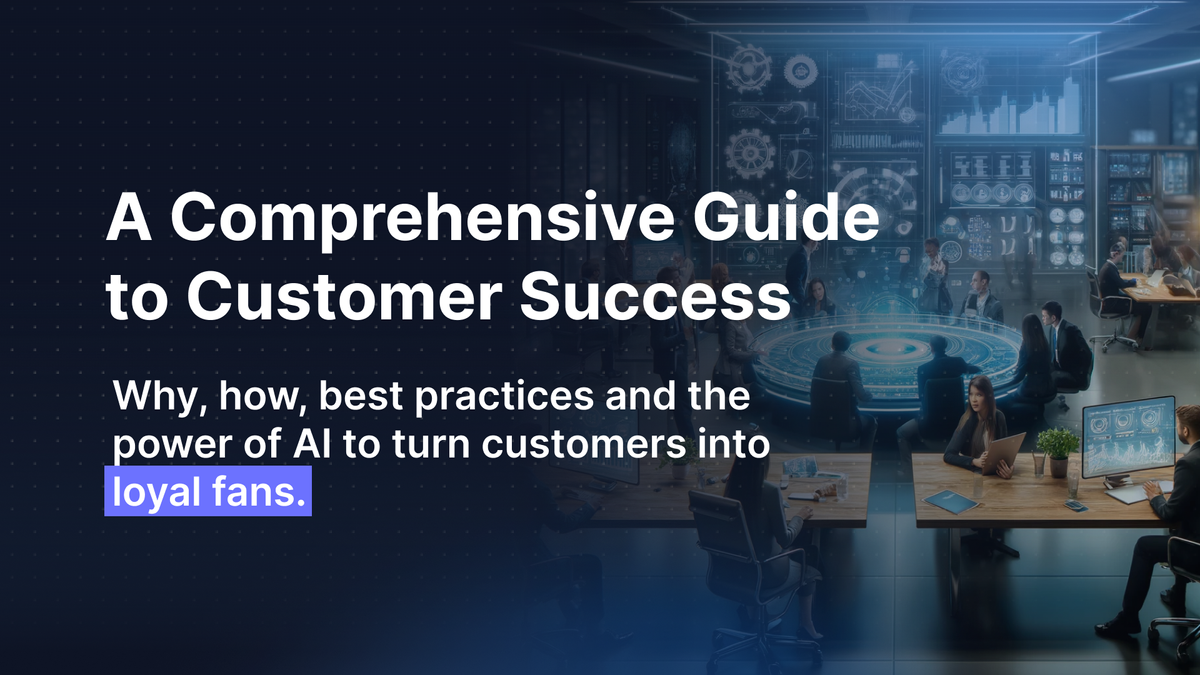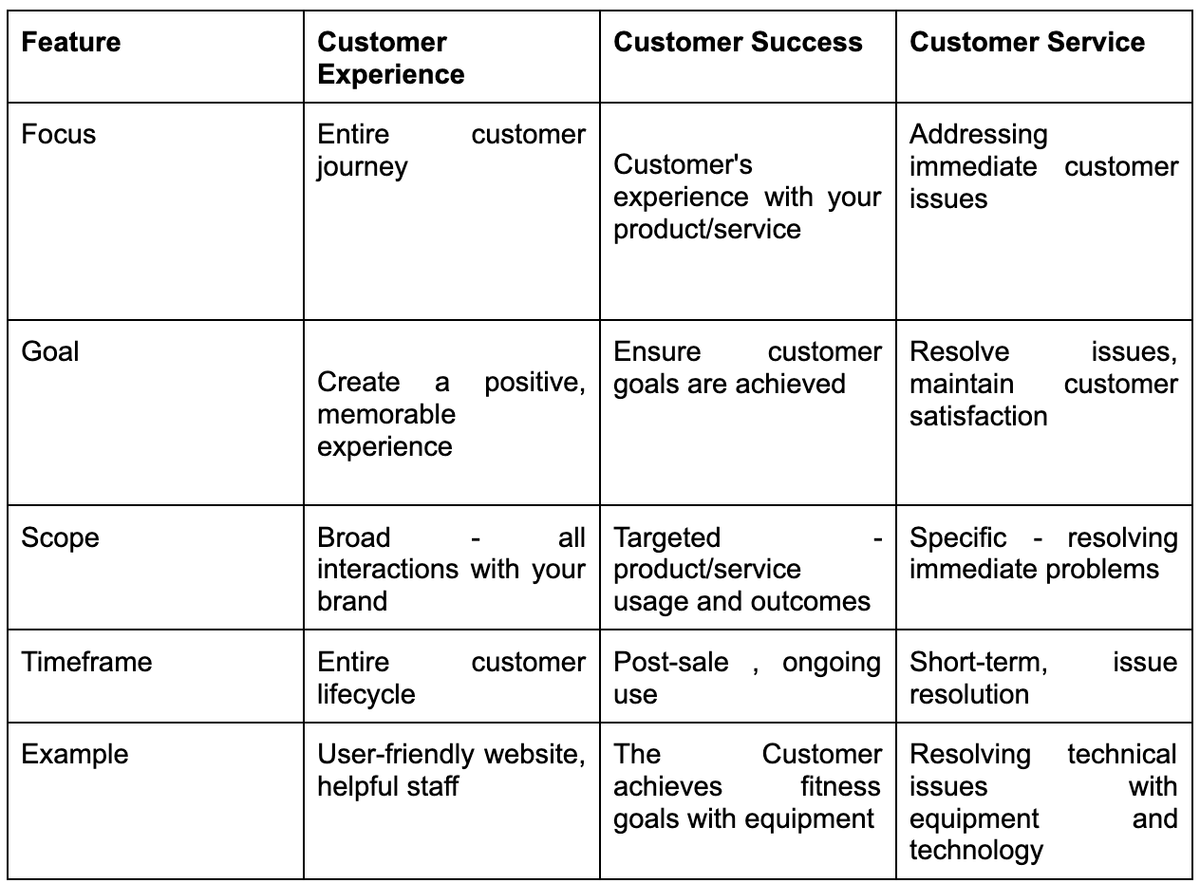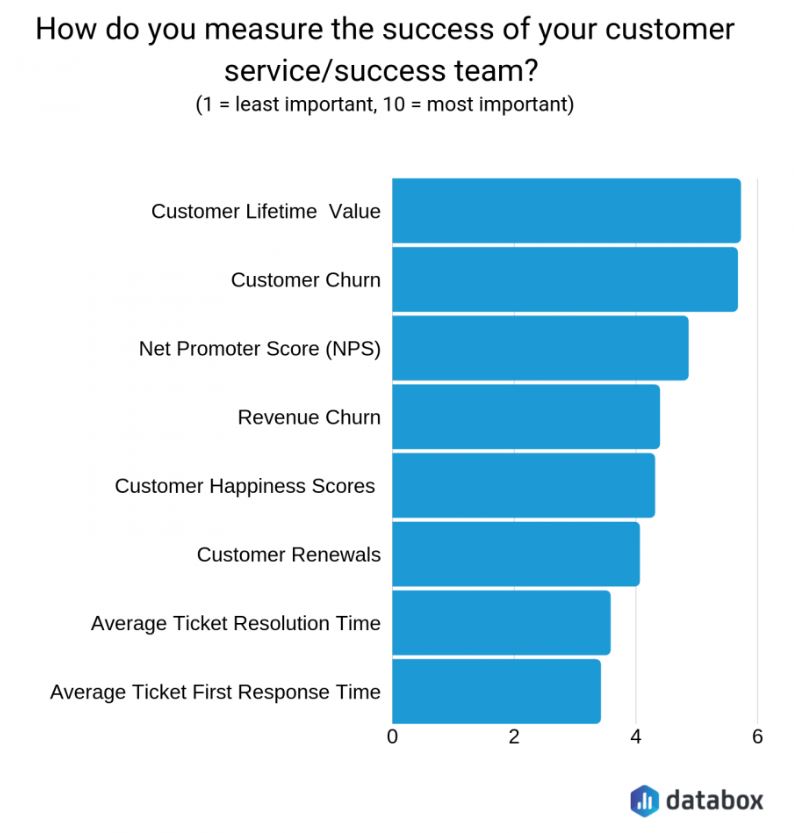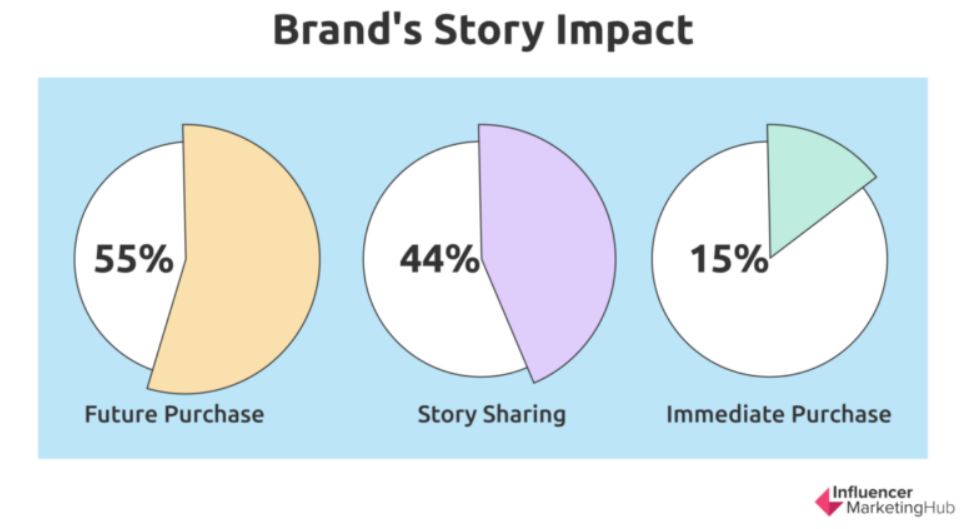Fuel business growth with customer success! This guide explores the why, how,...

While every business has its unique customer journey, the ultimate goal of that journey remains constant: maximizing customer benefit. Customer success is exactly what brings this idea to life. Research shows a well-designed customer success program can generate a 91% ROI over three years. This is because it transcends sales and ensures customers get maximum value from your products or services.
This guide explores customer success, its importance, and how to implement a winning customer success strategy. You'll also learn how AI can streamline the process and boost customer lifetime value.
Customer success is a client-centric business approach that ensures customers get the maximum benefits and value from your products or services. This philosophy goes beyond sale/ purchase; it's about nurturing long-term, organic customer relationships.
The core concept of customer success is inherently subjective, varying across different businesses. However, the fundamental principle remains constant: aligning your goals with your customer's. This means ensuring your products and services deliver the intended value in the most effective way possible. Your client's achievement of their desired outcomes leads to increased opportunities for your business through customer loyalty and lifetime value.
Customer Success, Customer Experience, and Customer Service are customer-centric terms, often used interchangeably. However, there are key differences between them that you should know.
Customer experience (CX) spans the complete customer journey, including all interactions with your brand, from marketing materials to website interface and post-sale support. It's about the overall feeling a customer has about your business. On the other hand, customer success focuses specifically on a customer's experience with your product or service and how well it helps them achieve their goals.
For example: Imagine a clothing store. The CX might involve a user-friendly website, helpful staff, and a smooth checkout. Customer success would be ensuring the clothes fit well and meet their needs, whether it's a stylish outfit or comfortable workout gear.
Customer success and customer service are also closely linked but serve different purposes. Customer success focuses on the long-term value a customer gets from your products. They ensure customers achieve their goals and become loyal brand advocates. Customer service, on the other hand, addresses immediate issues and complaints. It acts as the first point of contact for customers facing problems with your products or services.
Suppose you have purchased a product from an E-commerce store. Did the product you bought actually help you achieve your goals? That's customer success. Did the store address your questions or problems effectively? That's customer service.
Let's understand this with the help of a comparison table:

The table above compares and contrasts three key customer-centric concepts. While customer success, customer experience, and customer service have distinct roles, a winning strategy requires them to work together. Ensuring a smooth customer journey (CX), resolving issues effectively (customer service), and maximizing the value of your products (customer success) help you build higher customer satisfaction and loyalty.
Customer experience (CX) and customer support have always been a major focus, but customer success, often overlooked, can make or break your business. This becomes crucial, especially in subscription-based, SaaS (Software as a Service), and B2B (business-to-business) industries.
Jason Lemkin, Managing director of a SaaS venture, believes that 90 percent of a SaaS business's setup depends on customer success. These models rely on recurring revenue, so keeping customers engaged and extracting maximum value is crucial. By helping users master your product or service, customer success fosters satisfaction and loyalty, leading to higher retention rates and increased upsell/cross-sell opportunities.
In the B2B world, customer success tackles the complexities of services, clients, and pricing plans. According to research on customer success, 82% of B2B companies with over 500 employees use a customer success program. A strong customer success team acts as a bridge, guaranteeing clients effectively utilize your solution and achieve their desired outcomes.
Customer success is essential for businesses of all sizes, be it startups or established enterprises. After all, why would someone continue doing business with a company if its products or services fail to deliver the promised value?
With so much emphasis on customer success, you must be thinking about how it can benefit your business. Let's see what does customer success do and how it helps you achieve your organizational goals.
Think about your buying habits. Why do you stay loyal to your favorite brands, consistently returning for their products or services? It's likely because they consistently deliver value, the product performs well, and the company provides excellent customer service. This translates directly to the business world. A survey by Forrester shows that customer-obsessed companies retain 2.2% more customers per year.
Focusing on customer success ensures your customers get their desired outcomes with your product, enhancing loyalty and reducing the chance they'll switch to a competitor.
Customer success creates a strong connection between happy customers and improved products. Gathering feedback and usage data helps you identify customer preferences and pain points. Share this information with research and development or marketing for product development and create offers that better align with what customers value.
Customer lifetime value (CLTV) is a key measure of customer success. It reflects the total profit a loyal customer brings over their relationship with your business. By focusing on customer satisfaction, customer success teams nurture long-term relationships. This results in repeat purchases, upgrades, and a higher CLTV, ultimately maximizing your business's revenue potential.

Source: Databox
For subscription businesses, customer success is the key to renewals. A good SaaS setup can strive for up to 90% annual renewal rate. It may seem too high, but customer success can make this possible. By ensuring subscribers find value and satisfaction in their subscriptions, customer success provides consistent revenue for your business.
Customer success fuels a positive brand reputation. Esteban Kolsky, a customer service researcher and analyst, states that 72% of customers will share a positive experience with six or more people. Happy customers become brand advocates, sharing their experiences and recommending your business to others. This organic word-of-mouth marketing builds trust and helps you stay ahead of competitors.
Customer success management (CSM) is a comprehensive approach to ensuring customers achieve their required outcomes with your product or service. You can also understand it as the basic framework of the customer success process. A CSM team acts like your customer's guide, providing ongoing support, engagement, and a smooth experience at every turn.
This is typically achieved through the use of specialized software and by collaborating with other departments. Prioritizing customer success enables you to build long-term loyalty, leading to sustainable growth for your business.
Customer success teams are the backbone of any customer-centric business. They are dedicated specialists who advocate for your customers, ensuring they achieve maximum value from your products and services. CSM teams leverage data insights to diagnose potential issues across touchpoints, including customer support, sales funnels, and other departments.
CSM teams implement strategic solutions and appropriate technology and develop customer success strategies to optimize customer retention, identify up-selling opportunities, and maximize customer lifetime value. Here are some of the people or team members you might find within a CSM team:
Customer success software is something that businesses use to refine their customer journey and experience. These platforms integrate with your existing customer data. They then analyze this data to provide actionable insights that help you proactively address customer concerns before they become bigger issues.
Unlike CRMs, which manage the entire customer lifecycle, customer success software focuses on the post-sale journey. They work seamlessly with CRMs, providing a more comprehensive understanding of your customers' expectations.
Artificial intelligence is constantly transforming business communication and customer success. AI integration empowers businesses to streamline processes and elevate customer experiences. Here are two key ways AI can be can be implemented in your customer success process:
AI-powered platforms: Choose customer success and CRM platforms with built-in AI features. These can analyze customer data to predict churn risk, personalize communication, and automate repetitive tasks like onboarding or scheduling meetings. For example, AI can identify customers who haven't logged in recently and trigger an automated email with helpful resources.
Conversational AI and chatbots: Integrate customer success software with existing AI applications to leverage real-time insights and accurate data. AI chatbots can answer basic questions 24/7, freeing up CSMs for complex issues. Additionally, chatbots can collect valuable customer data during interactions, allowing for further personalization and improved support.
A winning customer success strategy begins with the customer journey. By mapping this journey, you visualize every customer touchpoint with your business. This allows you to design an experience that optimizes their experience at each stage, leading to a successful outcome for both you and your customers.
If you are a beginner, start your customer success journey by aligning it with different stages of the customer journey:

A customer success strategy is your roadmap to achieve your desired business objectives. However, it is important to remember that no two customers or businesses are alike; there's no single path to success. The ideal customer success strategy depends upon your specific goals, the time frame you have in mind, and the metrics you choose to measure progress.
Here are some customer success best practices you can incorporate into your overall strategy to cultivate happy and loyal customers:
First impressions matter! How customers perceive your brand shapes their entire relationship with you. Brand awareness and storytelling are powerful tools to build trust and nurture emotional connections with potential customers. According to research by Headstream, People who love a brand's story are 55% more likely to purchase the product in the future, 44% will share the story with others, and 15% will buy the product on the spot.
Create compelling web content, marketing materials, and slogans that showcase your brand's unique value proposition. For example, You have an athletic apparel brand. Instead of just listing product features, tell a story. Show athletes how to overcome challenges and achieve peak performance while wearing their clothes. This emotional connection goes beyond technical specs, leaving a lasting impression and driving brand preference.

Source: Influencer Marketing Hub
Customers can't love what they don't understand. Product/Service Education is an effective tool to build trust and showcase your expertise. Let's take a marketing automation software company as an example. Here's a 3-step approach to educate your customers:
Don't let a confusing first impression derail customer success. Onboarding is a crucial customer success management strategy that turns prospects into long-term customers. Design a simple yet informative process that empowers them to use your product effectively. A disorganized experience can lead to customer churn. Here's how to create a smooth journey:

Source: Wyzowl
There is no customer success without unparalleled customer support. Today's customers expect prompt and effective solutions. A well-researched customer service process is your key to prioritizing their needs. Here's how to achieve this:
Empower Self-Service: Build a robust knowledge base with clear FAQs, articles, and tutorials. This helps customers to find solutions independently, reducing support tickets.
24/7 Availability: Leverage AI chatbots to provide first-line support around the clock. This allows customers to get answers and resolve basic issues anytime, anywhere.
The best way to achieve customer success is to provide them with what they exactly want. Here, AI is a game-changer. These powerful tools can collect and analyze vast customer data across interactions. This data provides a complete picture of your customers' needs, pain points, and preferences. Use these insights to:
Customer success is a two-way street. Communicate with your customers and actively seek feedback, even if they seem satisfied. Research shows that only 1 in 25 unhappy customers complain to a business; the rest just walk away. Customer feedback helps you identify "silent churn," i.e., customers who might not complain but stop doing business with you.
By gathering continuous feedback through these methods, you can constantly improve your customer experience and cultivate lasting loyalty.
Customer success leads to happy and loyal customers. Turn them into your brand advocates through loyalty programs that loyalty programs to boost customer satisfaction, revenue, and brand reputation:
Building a customer-centric culture starts with empowering your customer success team. Invest in their growth to ensure continued customer success. Here's how:
Customer success, often overlooked, is a powerful driver of sustainable business growth. This guide has highlighted the key concepts and how customer experience (CX), customer service, and customer success work together to empower customers and achieve their desired outcomes.
While CRM and CSM play vital roles, AI support takes customer success a step further. AI-powered customer service goes beyond 24/7 availability. Integrated with CSM systems, AI chatbots tackle complex challenges like churn reduction, boosting CLTV, and increasing revenue while creating an improved customer experience.
If you are an entrepreneur striving for customer success, consider Aidbase. Our no-code AI support ecosystem seamlessly integrates with your CRM and CSM, maximizing customer value and business growth.
Here are some of the key metrics to measure customer success:
Customer data analysis is key. Look for red flags like declining usage, lack of engagement, or unanswered support tickets. Proactive outreach and addressing concerns can help prevent churn effectively.
Customer success is crucial for all businesses, not just large enterprises. It helps small businesses acquire new customers, retain existing ones, and build positive brand recognition, leading to sustainable growth.
Here are a few mistakes to avoid:
AI can be a valuable tool for customer success. Here are a few examples: